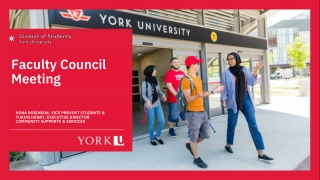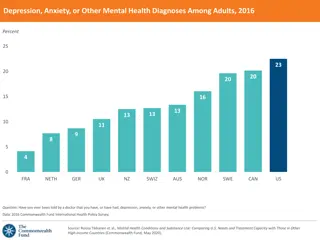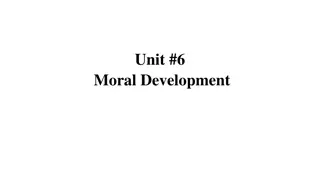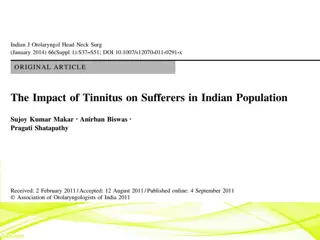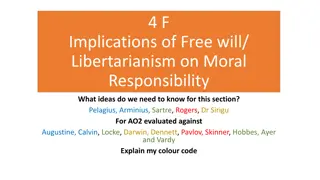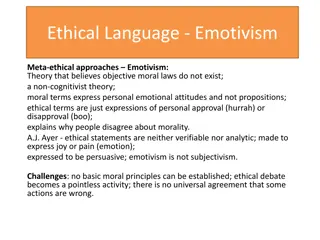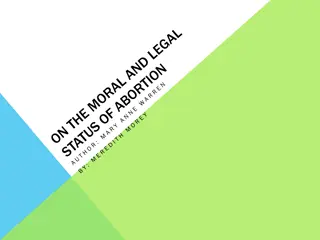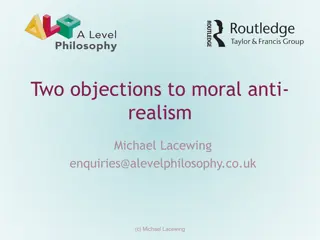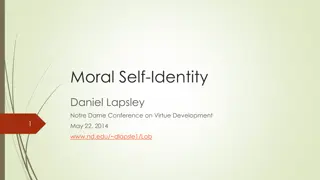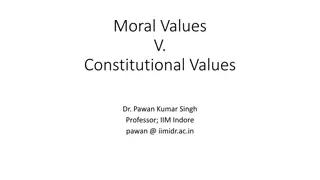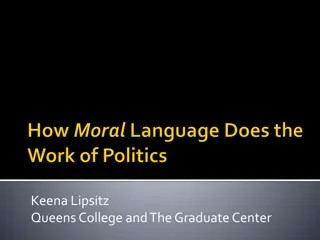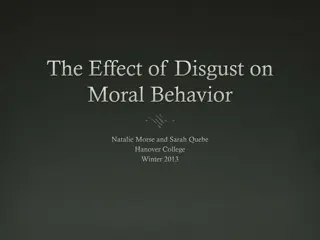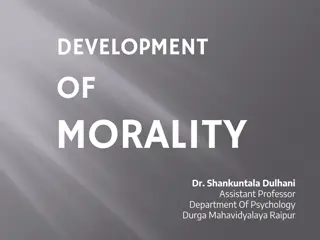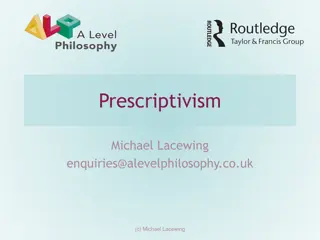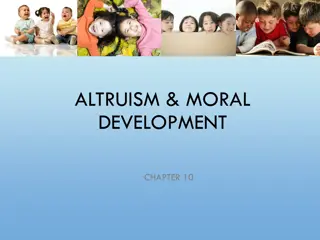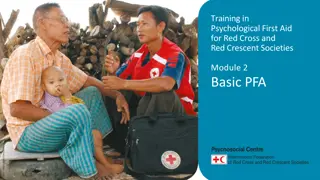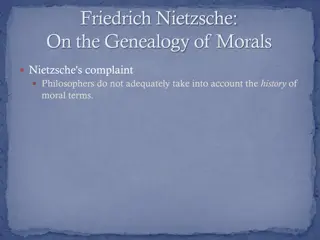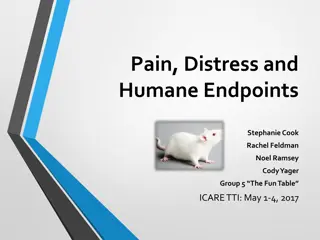Understanding Moral Distress in Healthcare
This content discusses the concept of moral distress in healthcare, defined as the pain and anguish experienced when one knows the right thing to do but faces internal or external barriers preventing action. It explores the implications of moral distress on healthcare practitioners and emphasizes the importance of sensitivity to ethical aspects, embracing values, and accepting moral responsibility. The content also addresses the perpetual struggle of the moral self to meet ethical standards.
Download Presentation

Please find below an Image/Link to download the presentation.
The content on the website is provided AS IS for your information and personal use only. It may not be sold, licensed, or shared on other websites without obtaining consent from the author. Download presentation by click this link. If you encounter any issues during the download, it is possible that the publisher has removed the file from their server.
E N D
Presentation Transcript
Daniel Garros, MD Associate Professor of Pediatrics The Dossetor Health Ethics Centre & Univ. of Alberta, Attending Physician, PICU, Stollery Children s Hospital Wendy Austin, RN, PhD Professor Emeritus Canada Research Chair (Relational Ethics in Health Care) 2003-2013 The Dossetor Health Ethics Centre & Univ. of Alberta Edmonton, Canada
Moral Distress The pain or anguish affecting the mind, body or relationships in response to a situation in which the person is aware of a moral problem, acknowledges moral responsibility, and makes a moral judgment about the correct action; yet, as a result of real or perceived constraints, participates in perceived moral wrongdoing, or is unable to act on one s moral choices. Nathaniel, A. (2006). Moral Reckoning in Nursing . Western Journal of Nursing Research, 28(4), 419-438. Definition on p. 421. Nathaniel, A. (2003). A Grounded theory of moral reckoning in nursing. West Virginia University, p. 22.
Arises when a person believes s/he knows the right thing to do But is unable to act on one s moral choices, due to: Internal (personal) constraints Or because of external (contextual) barriers
Practitioner Action 1 ? Outcome 1 Action 2 ? Outcome 2
Practitioner ---------///-------------- Outcome Action blocked
May be an expression of sensitivity to the moral aspects of practice Appreciation of vulnerability of patients Embracing of values expressed in codes of ethics Acceptance of accountability and moral responsibility
The moral self is a self always haunted by the suspicion that it is not moral enough. (Bauman, Postmodern Ethics, p. 80)
Moral residue George Webster & Fran ois Baylis Crescendo Effect Elizabeth Epstein & Ann Hamric
The starkest of alternativeslife and death of children are focused in sharp relief in the PICU. 1 PICUs are high-tech, high-pressure environments in which physicians (intensivists) co-ordinate a multidisciplinary team 2 PICU teams include: physicians, respiratory therapists, dieticians, pharmacists, occupational therapists, clergy. 2 nurses, physical therapists, psychologists social workers, 1. DeMaso, D. & Meyer, E. (1996). A psychiatric consultant s survival guide to the pediatric intensive care unit. J AM Acad Child Adolesc Psychiatry, 35, 1411- 13. 2. Austin, W., Kelecevic, J., Goble, E. & Mekechuk, J. (2009). An overview of moral distress and the PICU Team, Nursing Ethics,16(1), 57-68.
High Tech Environment Multidisciplinary Teams End-of-Life Decision-Making
Their story, yours, mine - its what we all carry with us on this trip we take, and we owe it to each other to respect our stories and learn from them. - William Carlos Williams
Setting: 6 Canadian PICUs Participants: nurses, intensivists, dieticians, social workers, respiratory therapists, residents Story Gathering interviews, focus groups Analysis: extraction of stories (63) creation of typology Dissemination: Play: Just Keep Breathing; Website; Presentations & Publications Further research Secondary analysis re: org influences Dissemination grant
Communication Breakdown Hierarchy & Power differences our voice not heard (a team?) Multidisciplinary conflicts Conflicts with families dissimilar goals of therapy diverse views on disability Patient suffering
Clinical situations: Unnecessary Treatment Prolonged dying aggressive treatment Inadequate inform consent Incompetence of colleagues Being in the middle Internal Factors Perceive powerless Lack of Knowledge Increased moral sensitivity Lack of FULL understanding of a situation Amric et al, The Pharos, 2006
Institution culture/ constrains Lack of time Understaffing Lack of admin support Polices and priorities and conflict with care needs Pressure to reduce cost compromising care Reimbursement constrains Co-worker issues/ different professional perspectives Amric, A et al, The Faros, 2006
Debriefing formal and informal Ethics consultation Ethics training develop tools for sense-making and coping Rounds learning from cases Interdisciplinary understanding and support Inclusive decision-making (including family) Time away from unit/situation Self-care exercise, spirituality, humour, journaling, Sharing with a colleague; spouse
Time away from unit/situation Self-care: fitness strategies spiritual strategies (e.g., rituals) journaling humour
This is not a place where I have the freedom to work ethically.
www.picumoraldistress.ualberta.ca www.justkeepbreathingfilm.com www.facebook.com/justkeepbreathingfilm


